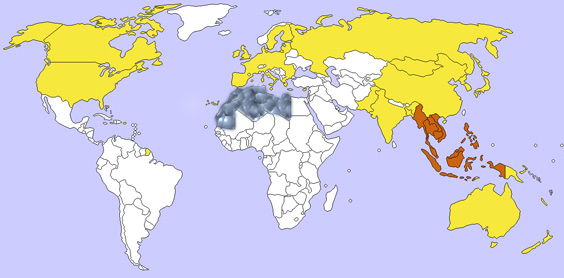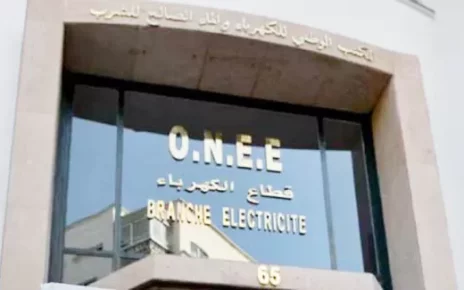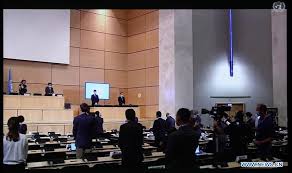Despite the fact that the Maghreb countries constitute one region that is culturally, geographically and historically integrated, they have largely failed to achieve ‘functional integration’ particularly at the political and economic cooperation level. The “non-Maghreb” is a term coined by some experts referring to the enduring phenomenon of the Maghreb countries’ failure to boost their economic cooperation. But it would be rather short-sighted to analyze the benefits of regionalization purely in terms of economic integration – instead, we need to also consider the role of regional arrangements and agencies in the prevention of intra-state conflicts and, more generally, their positive influence on the maintenance of regional and international peace and security.
 The vision of a common market composed of the Maghreb countries set out in 1989 in the Founding Treaty of the Arab Maghreb Union seems to have largely faded away with the turbulent events and socio-political changes in the region. Even though the Maghreb nations agreed in December 2010 to create the Maghreb Free Trade Area (due to be launched in 2011), the implementation details remain up in the air. The project has been hampered by various political and economic obstacles, the most significant and divisive possibly being disagreements between Morocco and Algeria regarding, among others, the issue of Western Sahara. The regional governments are far from taking a pragmatic approach towards economic integration that would attract foreign investment and initiate new opportunities in global markets.
The vision of a common market composed of the Maghreb countries set out in 1989 in the Founding Treaty of the Arab Maghreb Union seems to have largely faded away with the turbulent events and socio-political changes in the region. Even though the Maghreb nations agreed in December 2010 to create the Maghreb Free Trade Area (due to be launched in 2011), the implementation details remain up in the air. The project has been hampered by various political and economic obstacles, the most significant and divisive possibly being disagreements between Morocco and Algeria regarding, among others, the issue of Western Sahara. The regional governments are far from taking a pragmatic approach towards economic integration that would attract foreign investment and initiate new opportunities in global markets.
And while the integration processes in the Maghreb have been largely modelled on and inspired by the European Union, the region’s leaders may also look for some lessons from other successful regional integrations further afield – notably from ASEAN in Southeast Asia. The key political objective in Europe has been to weaken the role of nation states and put in place a set of supranational institutions. In contrast, Arab countries have always resorted to an intergovernmental approach to integration which reflected the reluctance of Arab leaders to transfer sovereignty to supranational bodies. Importantly, it is this key underlying principle that the Arab Maghreb Union (AMU) shares with the Association of Southeast Asian Nations (ASEAN).
Political considerations have always played and continue to play an important role in both driving and constraining regional integration processes. Unlike in Europe, where Brussels has sought to encroach on the power of nation-states, originally, to prevent another major armed conflict involving Germany and France, the raison d’être for the establishment of both ASEAN and also the AMU was, to a great degree, to preserve the power and protect sovereignty of the individual member states. In the ASEAN’s case, the underlying political consideration behind the grouping’s establishment in 1967 was the idea that by instigating the habit of co-operation, the Southeast Asian countries would overcome their internal rivalries in the face of a common communist external threat to their security.
Fast forward forty-five years and the leaders across the Maghreb region should similarly seek to define a common ‘enemy’ that would serve as the key raison d’être to further the stalled regional integration process: in the post-Arab Spring period, the most important ‘enemies’ of the Maghreb countries are clearly the high unemployment, a significant slow-down in the GDP growth rates and social instability, whereby it is arguably the consolidation of regional cooperation and the promotion of economic integration that would help the region countries improve their productivity, boost economic growth and also deal with various security challenges. A deeper integration in the Maghreb region is also important insofar as it will enable the North African states to jointly face up other regional groupings. The same rationale for a deeper economic integration is recognized, following the failed WTO negotiations, by leaders in both the EU and ASEAN – interestingly, in both cases particularly with regard to their economic and diplomatic relations with China.
While the Maghreb states have concluded numerous agreements to reduce trade barriers on a preferential basis, the process of implementation has been very slow, with frequent reversals and, for example, with many non-tariff barriers still remaining in place. In other words, most of the trade deals among the Maghreb states have not had much of an economic impact. It then hardly comes as a surprise that, when comparing the importance of intra-regional trade in the ASEAN and the AMU, the former had a much more profound economic impact on its members than the latter. When trying to explain the reasons for the failure in intra-Arab integration, studies often point to the very low levels of intra-regional trade in goods to somewhat absurdly demonstrate that the efforts for regional integration can be expected to yield only limited benefits. This kind of reasoning essentially involves an irrational ‘vicious circle’: the economic integration has failed because of a lack of intra-regional trade while the little intra-regional trade is a result of a lack of effective regional integration. More importantly, integration of the goods market is only one of many forms of economic integration and it is not by any means a prerequisite for other forms and processes of regional integration. Thus, while the successful regional integration in Europe started in the economic sphere, with an emphasis on the goods market, the ASEAN’s own integration was initiated as an ambitious political project aiming to foster collaboration to deal with the legacy of regional conflicts, border disputes and ethnic and racial tensions. Hence, the ASEAN example may well deserve some attention in North African capital cities.
These are perhaps the most important lessons that Maghreb leaders could learn from the so-called ‘ASEAN’s Way’, its own unique approach to regional integration: firstly, keeping channels of communication among the member states open under any circumstances; secondly, preference for quiet, non-confrontational diplomacy, instead of explicit, public criticism (the lack of condemnation of the dictatorial regime in Burma/Myanmar is an obvious example); third, guiding principle of working by consensus, rather than by binding agreements (which implies a low level of institutionalisation of the organization); fourth, adherence to the principles of non-interference and non-intervention, allowing each member country to lead its own affairs independently; fifth, constant emphasis on confidence-building and preventive diplomacy among its member states to overcome animosities and enhance mutual trust. Ultimately, perhaps the most remarkable fact remains that, as a result of their largely successful regional integration processes, both ASEAN and the EU have been able to achieve peace and stability in their regions and to varying degrees have also extended their peace message to their wider ‘neighbourhoods’.


